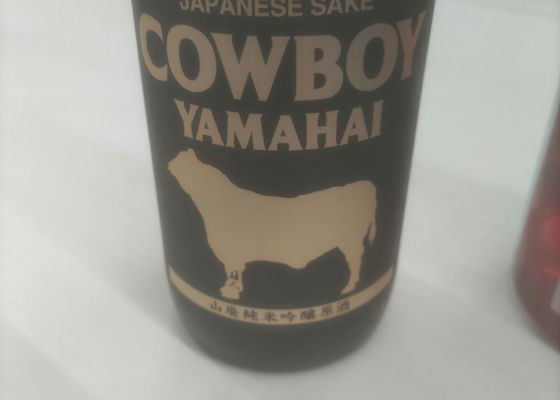
SakenowaRecord your sake experiences and discover your favorites
COWBOYCOWBOY
Flavor Chart®
A chart created from flavor analysis of user comments.

Flavor Tags ®
Tags generated from flavor analysis of user comments.
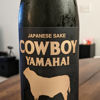
Popular Comments
Brands from Shiokawa Shuzo
Similar Brands
We analyze the flavors based on everyone's comments and select similar brands.
TachiyamaSimilar Characteristics
aizunishikiSimilar Characteristics
Location
662 Uchinomachi, Nishi-ku, Niigata,Open in Google Maps
Timeline

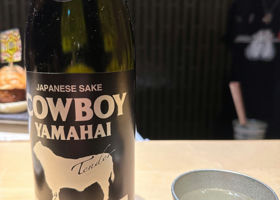
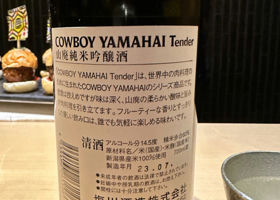
Nohu
。。2
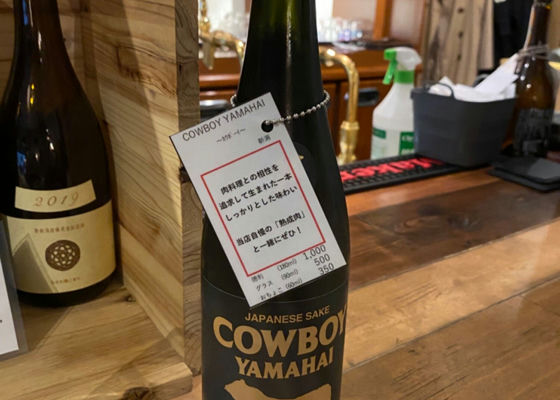
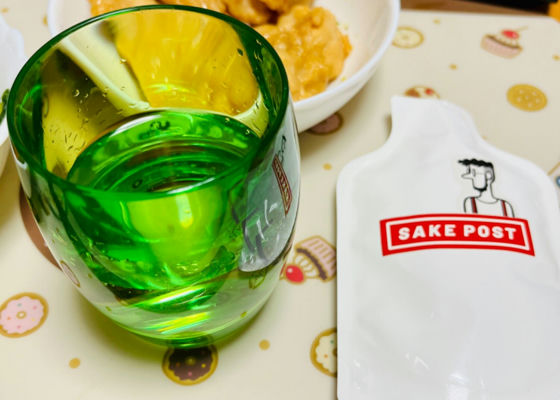
おもち もちもち
Liquor Post. Spicy !!!!
Japanese>English
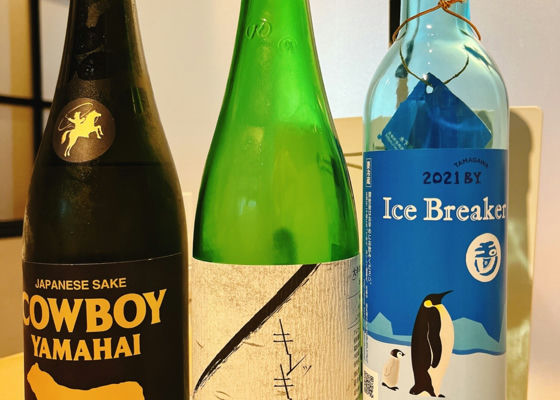


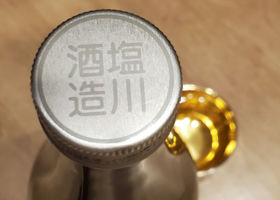

金猫魔
Born for meat dishes all over the world,
COWBOY YAMAHAI series, its Tender,
Today, we had a BBQ in the garden with our neighbor after a long time,
With sake to go with the meat.
It's gorgeous and understated,
Muscat and lactic acidity, with a hint of malted rice.
The color is clear,
The acidity is strong, like a white wine, but lighter and crisp.
but lighter and crisp,
The astringency is also mild.
and astringency is also mild,
Compared to the coolness of the bottle
The unique flavor of Yamahai is also gentle and soft,
The unique flavor of Yamahai is also gentle and soft.
The oil from the meat is easily washed away and the sake goes well with the meat.
and the sake goes well with the meat.
But it was cold... and windy...
I wish the temperature would rise a little more soon!
=== Ingredients: Rice (domestic), rice malt, rice malt
Ingredients:Rice(domestic),Rice malt(domestic)
Rice: Niigata Prefecture rice
Rice polishing ratio: 60
Alcohol content: 14.5
1,375 yen per 720ml
=== The price
★★★★☆☆☆
Japanese>English
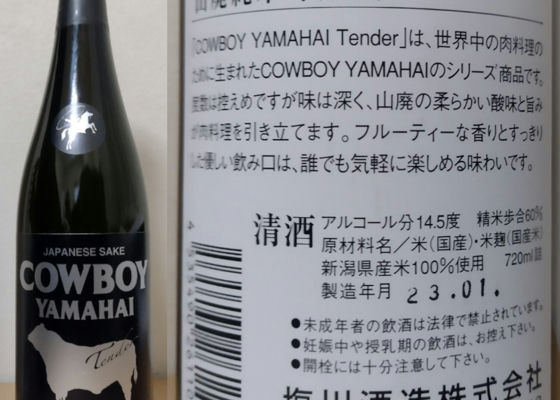
かつたま
I had been curious about it since I saw it featured on a beef tongue restaurant's Instagram, and happened to find it at a liquor store I went into, so I bought it.
The sake has an amazing smoky smell. Frankly speaking, it was a strange sensation. As a result, I didn't have a chance to eat good beef by the time I finished it, so I only paired it with karami (dried mullet roe).
Japanese>English
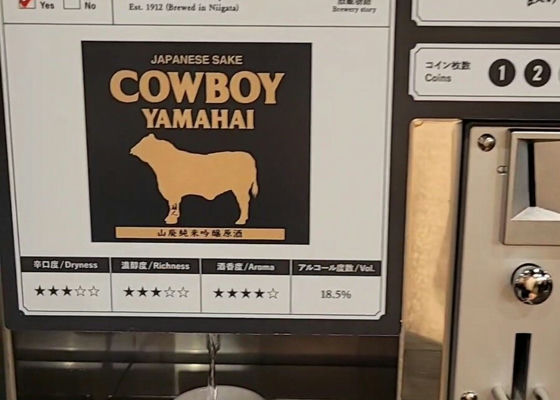
_sitbw
★★
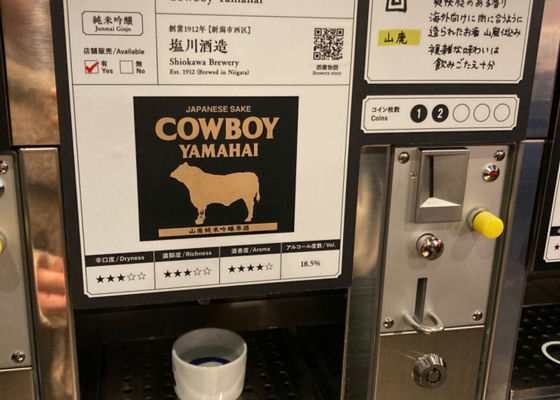
ぴーす
It tastes clearly different from the sake I've had in the past! The aftertaste is kind of like cheese, thick and stinky in a good way, and I would love to drink it while eating meat or something.
I want to try this kind of overly distinctive sake!
Japanese>English
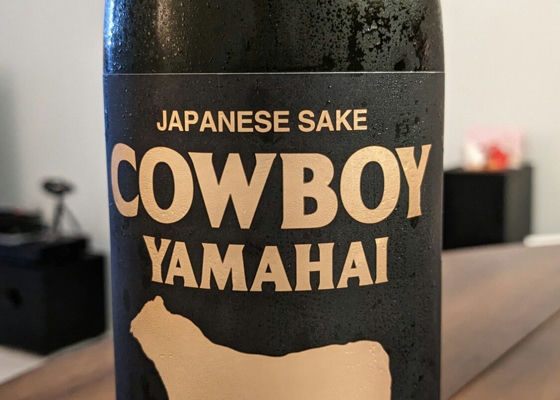
Saru808🐒
Today is Valentine's Day!👩❤️👨 This Sake paired very well with the filet mignon I prepared for my wife. There is a full mouth feel with umami. There is a light smoke flavor and wood. The aftertaste is short.
Rafa papa
Saru808🐒 Good evening 😃
Fillet steak and sake 😳⁉️ prepared for your wife is wonderful 🤣COWBOY I would love to drink it with meat 😋.
Japanese>English
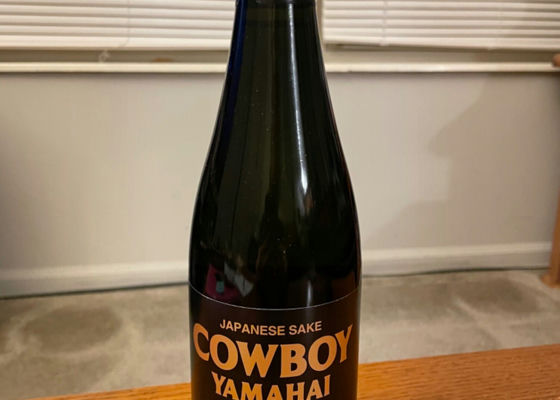
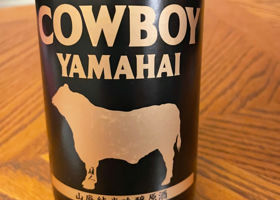

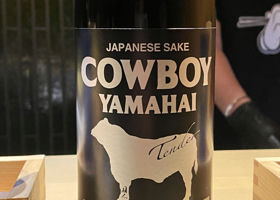
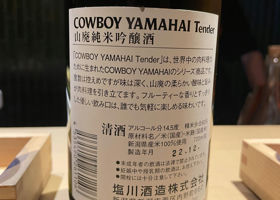
jinseigenkaiol
It was perfect for burgers 🐄.
Japanese>English
COWBOY山廃純米吟醸原酒
さけまる
A strange sake with "soy sauce and miso" appearing in front of your eyes when you smell it. When you take a sip, the miso-like aroma and the sweetness of ginjo litter the palate. The aftertaste is slightly bitter.
The second day after opening the bottle, the flavor becomes more subdued, but the soy sauce and miso that would go well with meat still linger in the mind. This sake is the embodiment of the peculiar Yamahai style.
When heated, the peculiarity disappears and the soy sauce and miso go away. The aftertaste is bitter, but it has a nice sharpness.
Beginners will have a hard time with this sake, but intermediate and advanced drinkers will definitely enjoy it in many ways. I would recommend serving it at room temperature to feel the peculiarity.
Japanese>English
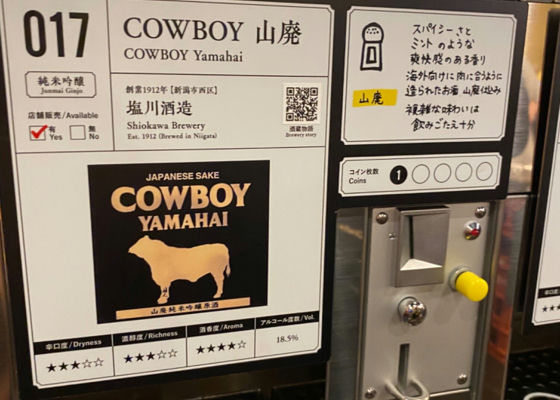
みたこ
label drinking
Smells smoky
It was the first type of alcohol I ever drank
Japanese>English
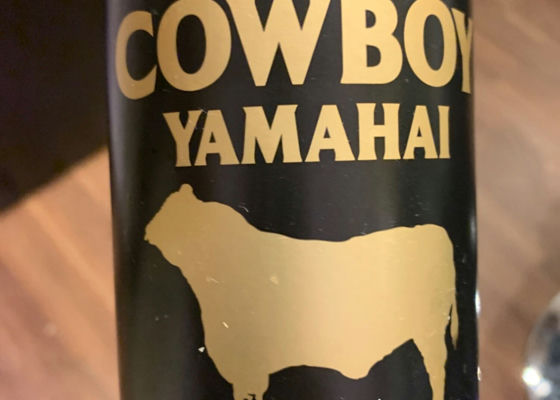
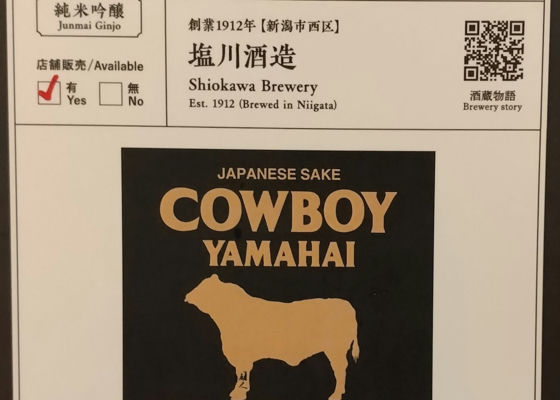

M&M
@Ponshukan Echigo Yuzawa Station